November itinerary in Japan Day 3 (Fukuoka Day 1)
(Wednesday, November 17)
Table of contents
2. Arima family mausoleum (Tamaya)
1. Zendoji temple
On the third day of my trip to Nagasaki and Fukuoka, I stopped by sightseeing spots while moving from Nagasaki prefecture to Fukuoka prefecture. First, I left Sasebo Station in the morning and headed for Zendoji temple in Kurume City, Fukuoka Prefecture. The trains I got on are as follows.
Depart Sasebo Station at 8:06, JR Limited Express Midori No. 6, bound for Hakata, arrive at Tosu at 9:30
Depart Tosu at 9:41, JR Kagoshima line rapid train bound for Araki, arrive at Kurume at 9:47
Depart Kurume at 10:14, JR Kyudai Line bound for Hita, arrive at Zendoji at 10:33
Total fare Yen 3,120 (including limited express ticket)
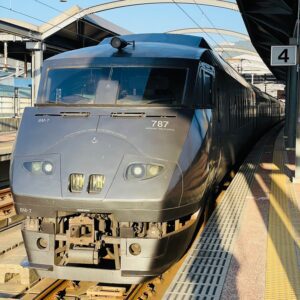
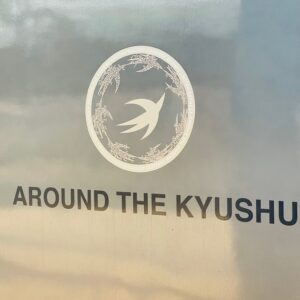
As I always think when I get on the train, the limited express trains of JR Kyushu are very cool. Mark is also cool, so I think there are good designers. The 787 series I boarded won the Japan Railfan Club Blue Ribbon Award in 1993. It started commercial operation in 1992, but the design that does not make us feel old-fashioned is wonderful.
Zendoji station was a very retro wooden station. The photo is retrograde and blue. Zendoji temple is about a 15-minute walk from Zendoji Station.
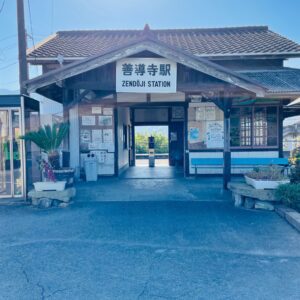
Zendoji is a temple of the Jodoshu Daihonzan, which is said to have been opened by Shoko Shonin (Chinzei Shonin) in 1208. Shoko Shonin is a disciple of Honen Shonin, the founder of the Jodo sect. Shoko Shonin was from Chikuzen Province (now Kitakyushu City).
There are eight national important cultural properties, including the main hall, Daimon, and the back of the warehouse. Daimon was built in 1651 and is the oldest building in Zendoji.
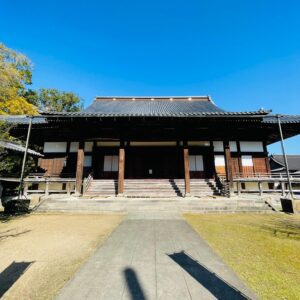
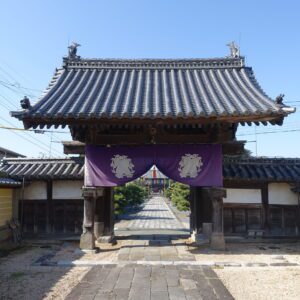
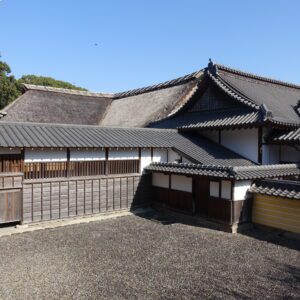
The two camphor trees are 800-year-old large trees that are said to have been planted by Shoko Shonin. The height is about 40m. It may not be visible in the photo, but the real thing is big trees.
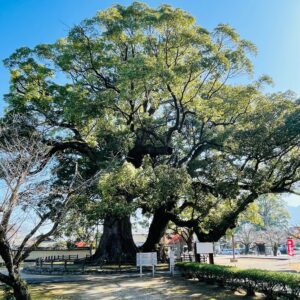
Kenjun (1534? -1623?), The founder of Tsukushi koto (instrument) music, was a monk at Zendoji Temple. Therefore, there is a monument of the birthplace of the koto music in the precincts of Zendoji.
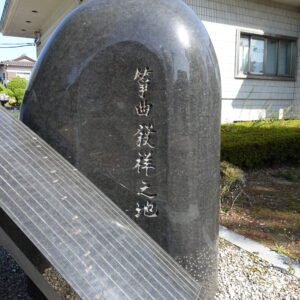
Zendoji is a historic temple, but I think that there are no tourists other than me, and it is gathering the faith of the local people. The precincts were very quiet and calm.
2. Arima family mausoleum (Tamaya)
I left Zendoji and headed from Zendoji station to Kurume station. The trains I got on are as follows.
Depart Zendoji Station at 11:25, JR Kyudai Line bound for Kurume, arrive at Kurume at 11:42, fare Yen 280
At Kurume Station, “Yufuin no Mori”, which connects Hakata Station with Yufuin / Beppu Station, stopped. “Yufuin no Mori” is also cool.
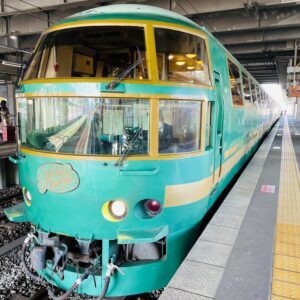
I went to the Arima family mausoleum (Tamaya), which is about a 5-minute walk from Kurume Station. The Arima family mausoleum is located in the precincts of Bairinji temple, the family temple of the Arima clan, the lord of the Kurume domain. Bairinji temple is an ancient temple of the Rinzai sect, which is a sect of Zen. The five Arima family mausoleums are national important cultural properties.


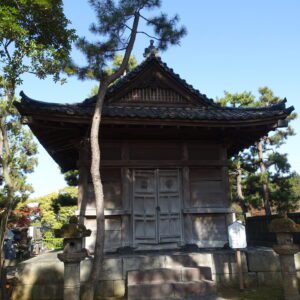
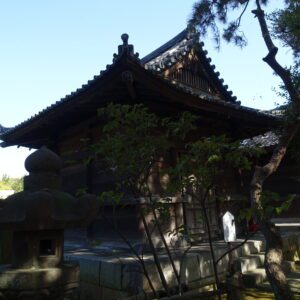
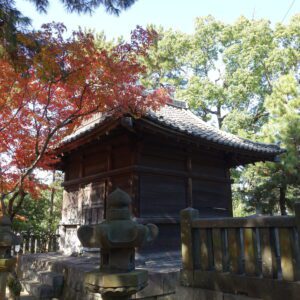
On the day I visited, the autumn leaves such as ginkgo were wonderful. There was only one family visiting the grave at Umerinji, and it was a quiet temple like Zen Buddhism. A walk in the precincts is recommended.
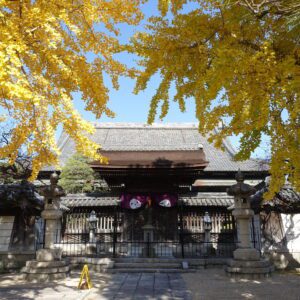
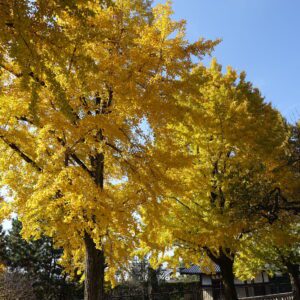
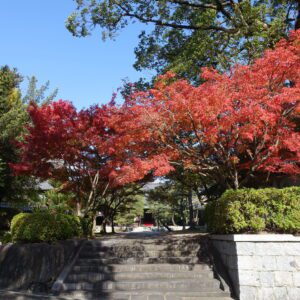
3. Kamado Shrine
After having lunch in Kurume city, I headed to Dazaifu. The trains I got on are as follows.
Depart Nishitetsu Kurume at 13:31, Nishitetsu Tenjin Omuta Line Express bound for Nishitetsu Fukuoka, arrive at Nishitetsu Futsukaichi at 13:53
Depart Nishitetsu Futsukaichi at 13:56, Nishitetsu Dazaifu line bound for Dazaifu, arrival at Dazaifu at 13:59
Total fare Yen 560
Immediately after arriving at Dazaifu Station, I headed to Kamado Shrine.
Depart Nishitetsu Dazaifu Station at 14:03, Uchiyama line, arrival at Uchiyama 14:11, fare Yen 100
When you get off the Uchiyama bus stop, you can walk to Kamado Shrine.
Kamado Shrine has a long history of more than 1350 years since its foundation. It has played the role of avoiding the influence of the demon of Dazaifu. The envoys to Japanese missions to Sui and Tang China, such as Saicho and Kukai, prayed for the safety of the voyage and the achievement of their goals before they crossed the continent.

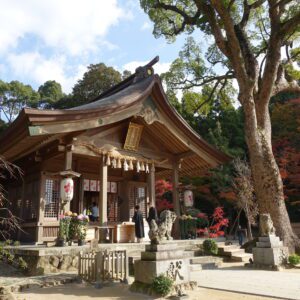
Kamado Shrine is the same as the name of Kamado Tanjiro in “Kimetsu no Yaiba”, and its role as avoiding the influence of the demon in Dazaifu is similar to the role as chasing the demons away of Kamado Tanjiro. It is said that it is the model shrine of “Kimetsu no Yaiba”, and the number of visitors is increasing. Also, the fact that the swordsman “Muso Gonnosuke” in the early Edo period is enshrined in the precincts of Kamado Shrine fit the image of “Kimetsu no Yaiba”. Although it was a weekday when I visited, the parking lot was full and there was a large queue waiting for the bus. Also, like Bairinji, the autumn leaves were beautiful.
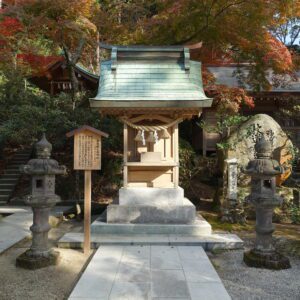
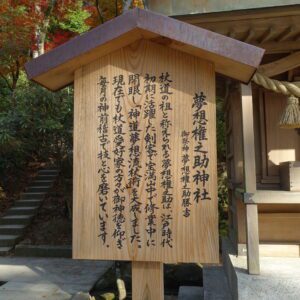

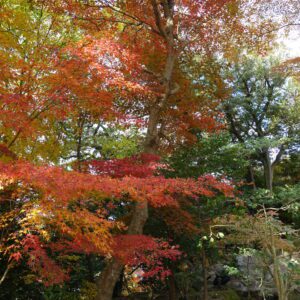
The flower water was also beautiful.

4. Dazaifu Tenmangu Shrine
I tried to go to Dazaifu Tenmangu Shrine by bus from Kamado Shrine, but it was a big crowd, so I walked. It takes about 20 minutes on foot, but it didn’t bother me so much because it was a downhill road.
When approaching Dazaifu Tenmangu Shrine, there is a shortcut called “Oishi Tunnel” on the left side, so it is convenient to go through this tunnel.

After passing through the “Oishi Tunnel”, you will find Tenkai Inari on your left. The autumn leaves of Tenkai Inari were also beautiful.
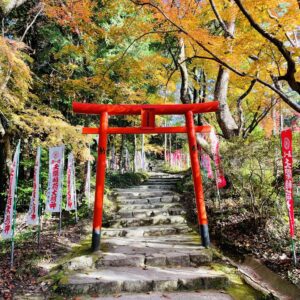
Dazaifu Tenmangu Shrine is the main shrine of about 12,000 shirines nationwide that enshrines Sugawara no Michizane. Dazaifu Tenmangu is too famous, so I don’t think it needs any explanation. The main shrine and Shiga shrine are national important cultural properties. Shiga shrine, which was rebuilt in 1458 during the Muromachi period, is older than the main shrine rebuilt by Takakage Kobayakawa in 1591 during the Azuchi-Momoyama period. It’s a pity that Shiga Shirine isn’t seen by anyone.

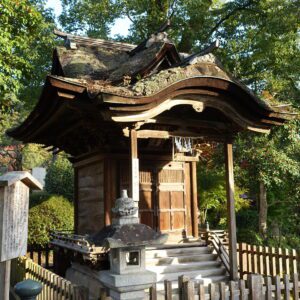
A chrysanthemum flower exhibition was held beside the tower gate of Dazaifu Tenmangu Shrine, and the characters “Tora” and the picture of a tiger in 2022 were made of chrysanthemums. I sincerely hope that the year of the Tiger in 2022 will be a good year.

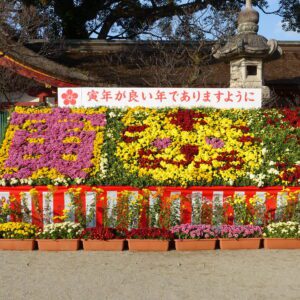
I took a bus from Dazaifu station and went to Hakata. The bus I got on is as follows.
Depart Dazaifu Station at 16:00, bound for Hakata Station, arrive at Hakata Bus Terminal at 16:40, fare Yen 610
The bus I got on was a Dazaifu liner bus named “Tabibito (Traveler)” and was wrapped with a picture of Dazaifu Tenmangu.
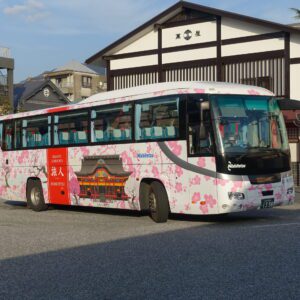
Note: The departure / arrival times, fares, admission fees, meal fees, etc. of the transportation facilities listed in the text are as of the time of writing the BLOG. They may change in the future, so please verify yourself when you go on a trip.